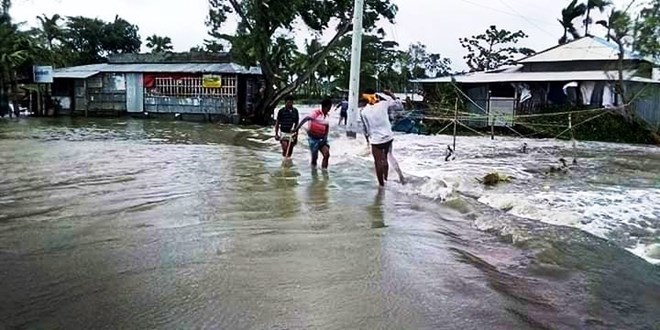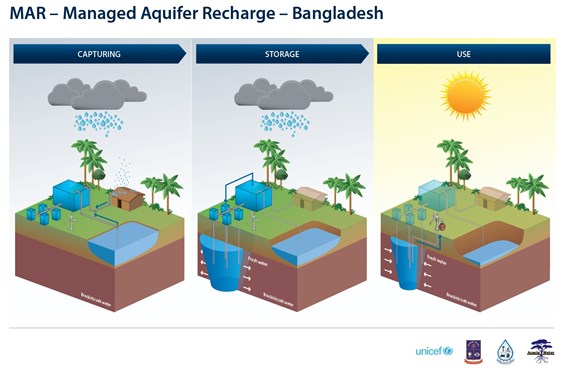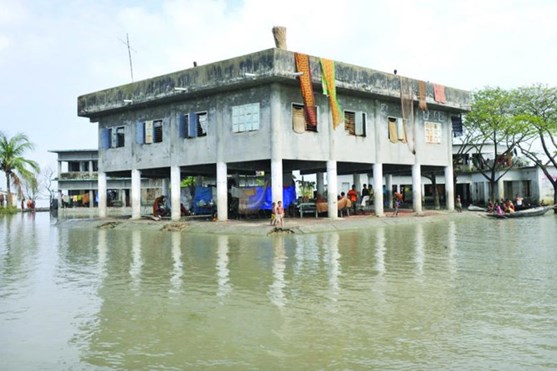When cyclone Amphan made landfall in Bangladesh and India on May 20, 2020 it left a trail of destruction. In Bangladesh the storm affected around 10 million people and destroyed ca. 55,000 houses. Even though improved forecasting and early evacuation of 2.2 million people prevented worse the death toll rose to 26 in Bangladesh alone.
High-speed winds pushed seawater land inwards, flooding parts of the low-lying areas of coastal Bangladesh. In these areas communities often rely on freshwater ponds for drinking water supply, which are vulnerable to being destroyed or flooded with saltwater during a cyclone.
Over the past decade around 100 MAR systems have been constructed in coastal Bangladesh to provide safe drinking water to rural communities. MAR (Managed Aquifer Recharge) captures excess rainwater during the monsoon season and infiltrates it through wells into underground aquifers. The precious freshwater is safely stored underground and can be pumped up again whenever it is needed.
MAR systems need only little infrastructure above ground which makes the technique resilient against storms and floods. In the aftermath of cyclone Amphan researchers of Dhaka University led a damage assessment of all MAR pilot systems in south-western Bangladesh. In the village of Deluti, Paikgacha Upazila, the five freshwater ponds which usually provide drinking water for most of the community were flooded with seawater. The local MAR system built in 2015 was not damaged during the cyclone and quickly became the main source of drinking water for the community. The number of water users
increased from ca. 200 before the cyclone to ca. 600 after the cyclone. The project is managed by the NGO LoCOS, with financial support from UNICEF. Construction was carried out by DPHE (Department of Public Health Engineering) with technical and scientific guidance from Acacia Water and Dhaka University. In a later stage more scientific research is carried by Utrecht University and TU Delft.
This example shows the strengths of MAR: Drinking water supply that is safe, cyclone-proof, and cost-efficient. The approach of storing rainwater underground allows for decentralized and small-scale water supply infrastructure which can be adapted to the needs of the local community. The technique has been successfully implemented in brackish and saline environments where groundwater is not an option for drinking water supply.
In future, MAR systems could be installed at cyclone shelters for emergency water supply. The roof of these large, elevated buildings can be used to capture rainwater that is then safely stored in the underground using the MAR technique. Other potential areas of application include the combination of MAR with small piped water supply schemes and MAR in the urban context.








